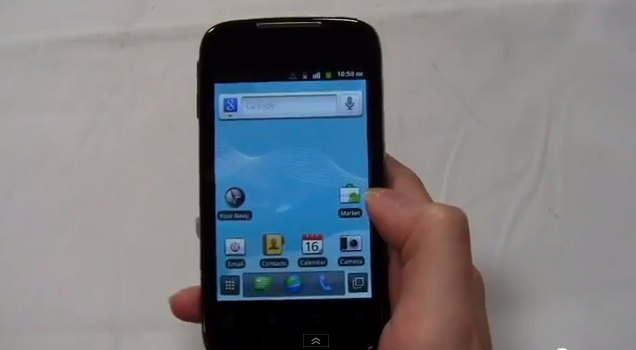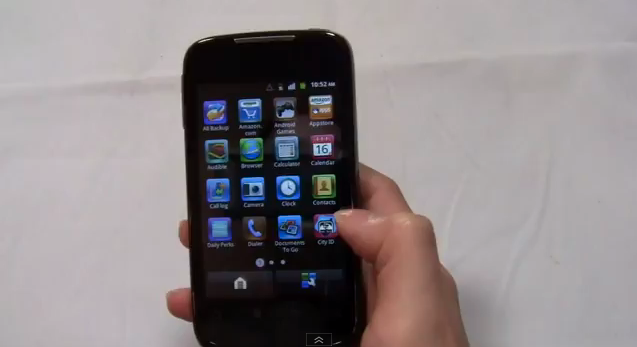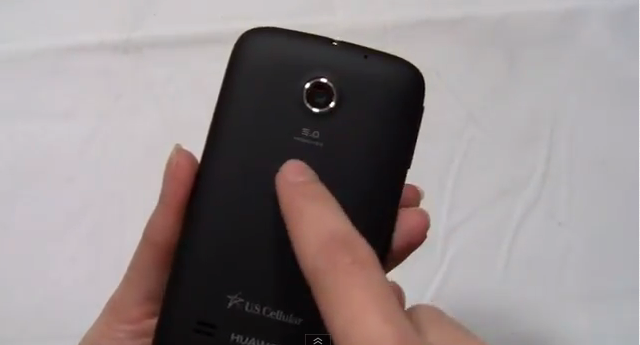
Huawei doesn't exactly have the best reputation in the U.S. smartphone market. Here, the company is known for offering decent low-end to mid-range options. That is not always a bad thing, but you know what to expect once you hear the name Huawei. The Ascend II does not break that mold, but again, maybe that's exactly what you're looking for. The phone is free on-contract, so it's pretty much as budget-friendly as you can get.
The question I ask myself is, and I'm sure you're asking the same thing, Why would I get the Ascend II with a 600 MHz processor, an unimpressive display, and an under-spec'd camera when I can get the much better HTC Merge for the same price or the somewhat better Samsung Mesmerize for $50 more? Well, that's the question I'm going to try to answer in the time that I have with the Ascend II.
For now, I've only had a day with the phone but here are some things I've taken note of:
- The Ascend II is powered by a 600 MHz Qualcomm processor and has a mere 256 MB of RAM. My hypothesis, therefore, is that intense multi-tasking will be nearly impossible with this phone. I currently have four active widgets on the five home screens and simply swiping through the home screens is sometimes choppy and laggy. Running multiple apps caused more problems.
- The phone's design is average but sufficiently attractive. The rounded back with a soft-touch coating gives it a smooth and sleek feel. It's rather light, only 4.8 ounces, but it feels sturdy enough. It is made entirely out of plastic, but that's to be expected with an inexpensive device like this. There seems to be enough hardware real estate to allow for a larger display, but I'm sure Huawei had its reasons for limiting it to 3.5-inches.

- Thankfully, the Ascend II ships with Android 2.3.5. Huawei has included its own custom skin on top of Android and it has several features reminiscent of Samsung's TouchWiz UI. The app drawer virtually mimics the old TouchWiz design. The notification bar features toggles for WiFi, Bluetooth, GPS, Data Switch, and Auto-Rotate. There is a dock at the bottom of the home screen with three shortcuts that can be customized. Interestingly, Huawei's UI works more like a launcher in that it allows you to download custom themes, icon packs, and even switch to a more vanilla Android experience. It's definitely not the most polished UI, but visual appearances and really a personal thing.
- It's hard to find a balance between accepting some limitations due to the price of the phone, and being rightfully disappointed. However, considering the two other options I mentioned earlier, the Merge and the Mesmerize, I find myself rightfully disappointed by the Ascend II's 5-megapixel fixed focus camera. Without an autofocus, you're really left to the mercy of lighting and the steadiness of your hand. I know that not everyone needs their cellphone camera to replace their stand-alone camera, but you still need it to take good shots, right? Well, this camera just doesn't do that.

- I've run a couple of speed tests with the Ascend II to test U.S. Cellular's 3G network. The speeds were on par with other 3G speeds in my area, but further testing will be needed to draw a more conclusive picture of what performance should be like.
- The Ascend II comes with a 1400 mAh battery. Due to the phone's small, low-resolution display, battery life should be good. The estimated talk time is 300 minutes (five hours), which may or may not be enough for a full day of use, depending on your usage habits. I'll have to test this before I pass judgement.
Getting a phone for free is generally a good thing. However, even when you're not putting any money down, it still may not be worth it. So far, the Ascend II hasn't impressed me much and hasn't given me many reasons to recommend it over one of U.S. Cellular's other budget-friendly options. I'll put it through further testing to see if it surprises me. Check back in for the full review and watch the unboxing below in the meantime.


